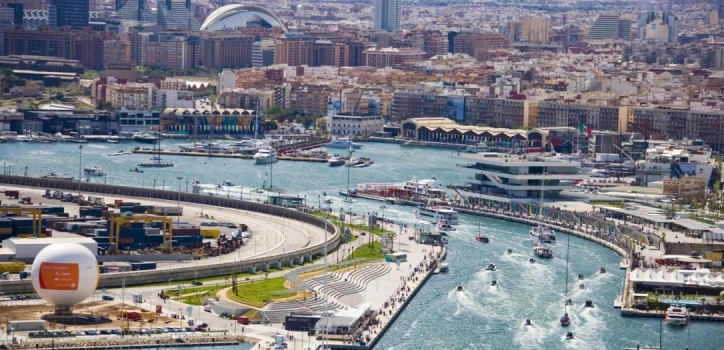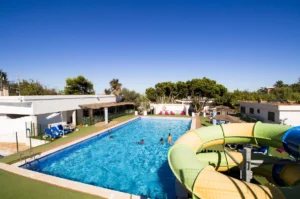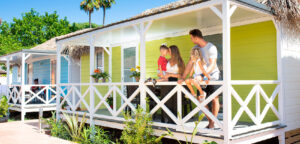LnRiLWdyaWQsLnRiLWdyaWQ+LmJsb2NrLWVkaXRvci1pbm5lci1ibG9ja3M+LmJsb2NrLWVkaXRvci1ibG9jay1saXN0X19sYXlvdXR7ZGlzcGxheTpncmlkO2dyaWQtcm93LWdhcDoyNXB4O2dyaWQtY29sdW1uLWdhcDoyNXB4fS50Yi1ncmlkLWl0ZW17YmFja2dyb3VuZDojZDM4YTAzO3BhZGRpbmc6MzBweH0udGItZ3JpZC1jb2x1bW57ZmxleC13cmFwOndyYXB9LnRiLWdyaWQtY29sdW1uPip7d2lkdGg6MTAwJX0udGItZ3JpZC1jb2x1bW4udGItZ3JpZC1hbGlnbi10b3B7d2lkdGg6MTAwJTtkaXNwbGF5OmZsZXg7YWxpZ24tY29udGVudDpmbGV4LXN0YXJ0fS50Yi1ncmlkLWNvbHVtbi50Yi1ncmlkLWFsaWduLWNlbnRlcnt3aWR0aDoxMDAlO2Rpc3BsYXk6ZmxleDthbGlnbi1jb250ZW50OmNlbnRlcn0udGItZ3JpZC1jb2x1bW4udGItZ3JpZC1hbGlnbi1ib3R0b217d2lkdGg6MTAwJTtkaXNwbGF5OmZsZXg7YWxpZ24tY29udGVudDpmbGV4LWVuZH0gLndwdi12aWV3LW91dHB1dFtkYXRhLXRvb2xzZXQtdmlld3Mtdmlldy1lZGl0b3I9IjU0MDQyNzcyNzA2MjcwOGMwNDBjM2U1ZjQ3MjY2ODc2Il0gPiAudGItZ3JpZC1jb2x1bW46bnRoLW9mLXR5cGUoM24gKyAxKSB7IGdyaWQtY29sdW1uOiAxIH0gLndwdi12aWV3LW91dHB1dFtkYXRhLXRvb2xzZXQtdmlld3Mtdmlldy1lZGl0b3I9IjU0MDQyNzcyNzA2MjcwOGMwNDBjM2U1ZjQ3MjY2ODc2Il0gPiAudGItZ3JpZC1jb2x1bW46bnRoLW9mLXR5cGUoM24gKyAyKSB7IGdyaWQtY29sdW1uOiAyIH0gLndwdi12aWV3LW91dHB1dFtkYXRhLXRvb2xzZXQtdmlld3Mtdmlldy1lZGl0b3I9IjU0MDQyNzcyNzA2MjcwOGMwNDBjM2U1ZjQ3MjY2ODc2Il0gPiAudGItZ3JpZC1jb2x1bW46bnRoLW9mLXR5cGUoM24gKyAzKSB7IGdyaWQtY29sdW1uOiAzIH0gLndwdi12aWV3LW91dHB1dFtkYXRhLXRvb2xzZXQtdmlld3Mtdmlldy1lZGl0b3I9IjU0MDQyNzcyNzA2MjcwOGMwNDBjM2U1ZjQ3MjY2ODc2Il0gLmpzLXdwdi1sb29wLXdyYXBwZXIgPiAudGItZ3JpZCB7IGdyaWQtdGVtcGxhdGUtY29sdW1uczogbWlubWF4KDAsIDAuMzMzM2ZyKSBtaW5tYXgoMCwgMC4zMzMzZnIpIG1pbm1heCgwLCAwLjMzMzNmcik7Z3JpZC1jb2x1bW4tZ2FwOiAzMnB4O2dyaWQtcm93LWdhcDogMzJweDtncmlkLWF1dG8tZmxvdzogcm93IH0gQG1lZGlhIG9ubHkgc2NyZWVuIGFuZCAobWF4LXdpZHRoOiA3ODFweCkgeyAudGItZ3JpZCwudGItZ3JpZD4uYmxvY2stZWRpdG9yLWlubmVyLWJsb2Nrcz4uYmxvY2stZWRpdG9yLWJsb2NrLWxpc3RfX2xheW91dHtkaXNwbGF5OmdyaWQ7Z3JpZC1yb3ctZ2FwOjI1cHg7Z3JpZC1jb2x1bW4tZ2FwOjI1cHh9LnRiLWdyaWQtaXRlbXtiYWNrZ3JvdW5kOiNkMzhhMDM7cGFkZGluZzozMHB4fS50Yi1ncmlkLWNvbHVtbntmbGV4LXdyYXA6d3JhcH0udGItZ3JpZC1jb2x1bW4+Knt3aWR0aDoxMDAlfS50Yi1ncmlkLWNvbHVtbi50Yi1ncmlkLWFsaWduLXRvcHt3aWR0aDoxMDAlO2Rpc3BsYXk6ZmxleDthbGlnbi1jb250ZW50OmZsZXgtc3RhcnR9LnRiLWdyaWQtY29sdW1uLnRiLWdyaWQtYWxpZ24tY2VudGVye3dpZHRoOjEwMCU7ZGlzcGxheTpmbGV4O2FsaWduLWNvbnRlbnQ6Y2VudGVyfS50Yi1ncmlkLWNvbHVtbi50Yi1ncmlkLWFsaWduLWJvdHRvbXt3aWR0aDoxMDAlO2Rpc3BsYXk6ZmxleDthbGlnbi1jb250ZW50OmZsZXgtZW5kfSAud3B2LXZpZXctb3V0cHV0W2RhdGEtdG9vbHNldC12aWV3cy12aWV3LWVkaXRvcj0iNTQwNDI3NzI3MDYyNzA4YzA0MGMzZTVmNDcyNjY4NzYiXSA+IC50Yi1ncmlkLWNvbHVtbjpudGgtb2YtdHlwZSgzbiArIDEpIHsgZ3JpZC1jb2x1bW46IDEgfSAud3B2LXZpZXctb3V0cHV0W2RhdGEtdG9vbHNldC12aWV3cy12aWV3LWVkaXRvcj0iNTQwNDI3NzI3MDYyNzA4YzA0MGMzZTVmNDcyNjY4NzYiXSA+IC50Yi1ncmlkLWNvbHVtbjpudGgtb2YtdHlwZSgzbiArIDIpIHsgZ3JpZC1jb2x1bW46IDIgfSAud3B2LXZpZXctb3V0cHV0W2RhdGEtdG9vbHNldC12aWV3cy12aWV3LWVkaXRvcj0iNTQwNDI3NzI3MDYyNzA4YzA0MGMzZTVmNDcyNjY4NzYiXSA+IC50Yi1ncmlkLWNvbHVtbjpudGgtb2YtdHlwZSgzbiArIDMpIHsgZ3JpZC1jb2x1bW46IDMgfSAud3B2LXZpZXctb3V0cHV0W2RhdGEtdG9vbHNldC12aWV3cy12aWV3LWVkaXRvcj0iNTQwNDI3NzI3MDYyNzA4YzA0MGMzZTVmNDcyNjY4NzYiXSAuanMtd3B2LWxvb3Atd3JhcHBlciA+IC50Yi1ncmlkIHsgZ3JpZC10ZW1wbGF0ZS1jb2x1bW5zOiBtaW5tYXgoMCwgMC4zMzMzZnIpIG1pbm1heCgwLCAwLjMzMzNmcikgbWlubWF4KDAsIDAuMzMzM2ZyKTtncmlkLWF1dG8tZmxvdzogcm93IH0gIH0gQG1lZGlhIG9ubHkgc2NyZWVuIGFuZCAobWF4LXdpZHRoOiA1OTlweCkgeyAudGItZ3JpZCwudGItZ3JpZD4uYmxvY2stZWRpdG9yLWlubmVyLWJsb2Nrcz4uYmxvY2stZWRpdG9yLWJsb2NrLWxpc3RfX2xheW91dHtkaXNwbGF5OmdyaWQ7Z3JpZC1yb3ctZ2FwOjI1cHg7Z3JpZC1jb2x1bW4tZ2FwOjI1cHh9LnRiLWdyaWQtaXRlbXtiYWNrZ3JvdW5kOiNkMzhhMDM7cGFkZGluZzozMHB4fS50Yi1ncmlkLWNvbHVtbntmbGV4LXdyYXA6d3JhcH0udGItZ3JpZC1jb2x1bW4+Knt3aWR0aDoxMDAlfS50Yi1ncmlkLWNvbHVtbi50Yi1ncmlkLWFsaWduLXRvcHt3aWR0aDoxMDAlO2Rpc3BsYXk6ZmxleDthbGlnbi1jb250ZW50OmZsZXgtc3RhcnR9LnRiLWdyaWQtY29sdW1uLnRiLWdyaWQtYWxpZ24tY2VudGVye3dpZHRoOjEwMCU7ZGlzcGxheTpmbGV4O2FsaWduLWNvbnRlbnQ6Y2VudGVyfS50Yi1ncmlkLWNvbHVtbi50Yi1ncmlkLWFsaWduLWJvdHRvbXt3aWR0aDoxMDAlO2Rpc3BsYXk6ZmxleDthbGlnbi1jb250ZW50OmZsZXgtZW5kfSAud3B2LXZpZXctb3V0cHV0W2RhdGEtdG9vbHNldC12aWV3cy12aWV3LWVkaXRvcj0iNTQwNDI3NzI3MDYyNzA4YzA0MGMzZTVmNDcyNjY4NzYiXSAgPiAudGItZ3JpZC1jb2x1bW46bnRoLW9mLXR5cGUoMW4rMSkgeyBncmlkLWNvbHVtbjogMSB9IC53cHYtdmlldy1vdXRwdXRbZGF0YS10b29sc2V0LXZpZXdzLXZpZXctZWRpdG9yPSI1NDA0Mjc3MjcwNjI3MDhjMDQwYzNlNWY0NzI2Njg3NiJdIC5qcy13cHYtbG9vcC13cmFwcGVyID4gLnRiLWdyaWQgeyBncmlkLXRlbXBsYXRlLWNvbHVtbnM6IG1pbm1heCgwLCAxZnIpO2dyaWQtYXV0by1mbG93OiByb3cgfSAgfSA=
Valencia, capital of the Valencian Community, has such a rich and important cultural and artistic heritage that it would be impossible not to mention it in this little section. Therefore, we will list some of the most prevalent monuments and buildings in the city that will enable you to get to know it a little better.
Main places of interest: Cathedral (1262-1426); Puerta de los Apóstoles (Cathedral), where there has been a Tribunal of Waters every Thursday for a thousand years; el Micalet (gothic belltower of the Cathedral);Real Basílica de Nuestra Señora de los Desamparados(Royal Basilica of Our Lady of the Forsaken, 17th century); Convent of Santo Domingo; Churches of Santa Catalina, San Martín, el Carmen, la Santa Cruz; gothic Church of San Juan del Hospital, Church of Santos Juanes. Lonja de los Mercaderes (Silk Exchange, 1482-1492), declared a World Heritage Site by UNESCO; Torres de Serranos (European Gothic gateway), built at the end of the 14th century; Torres de Quart (15th century); Archaeological Crypt of San Vicente Prison (with a Visigothic funeral chapel in the shape of a cross); Palau de la Generalitat (gothic building from the 15th century, current headquarters for the Generalitat Valenciana government); Palacio del Temple (1760), Palaceof Justice; Palacio de la Batlia and the Palace of the Marquis of Scala (headquarters of the Valencian Council); Archbishop’s Palace; Ayuntamiento (‘City Hall’, 18th century); Central Market (1928); Estación del Norte (modernist building, built between 1906 and 1917); Old University; Almudín (museum, 13th to 16th centuries); Bullring (1850-1860); City of Arts and Sciences (Tel. 902100031 for bookings), designed by the Valencian architect Santiago Calatrava, it is a symbol of Valencia’s artistic and cultural avant-garde. It is divided into the Hemisfèric, Palace of Arts, Prince Felipe Science Museum and the Universal Oceanográfic Park. Palacio de Congresos (work by the architect Norman Foster); IVAM, Instituto Valenciano de Arte Moderno (‘Valencian Institute of Modern Art’); Museo de Bellas Artes S.Pío V (‘Fine Arts Museum San Pio V’), Centre Valencià de la Cultura Mediterrànea-La Beneficència (Ethnology Museum and Prehistory Museum); MUVIM, Museo Valenciano de la Ilustración y la Modernidad (‘Valencian Museum of Illustration and Modernity’), where the Sala Parpalló is also located; Palacio Marqués de Campo-Museo de la Ciudad (City Museum); González Martí National Museum of Ceramics and Sumptuary Arts; Museum and College of High Silk Art; Museum of the Artista Fallero; Bullfighting Museum; Atarazanas; Almoina… Valencia also has many gardens that complement the urban landscape: Gulliver Park, Botanical Garden of Valencia, Gardens of Montforte, Turia Gardens, Royal Gardens.
The most well-known festivals of the city of Valencia are Las Fallas (in March), declared to be of International Tourist Interest, whose origins date back to the end of the 15th century. La Semana Santa Marinera (‘Holy Week at Sea’); El Traslado de la Virgen de los Desamparados (‘Carrying of the Virgin of the Forsaken’), among others.



